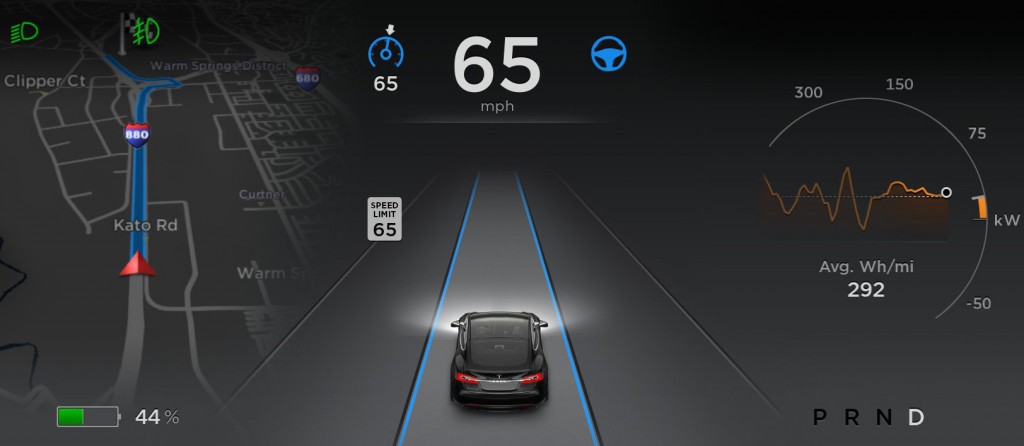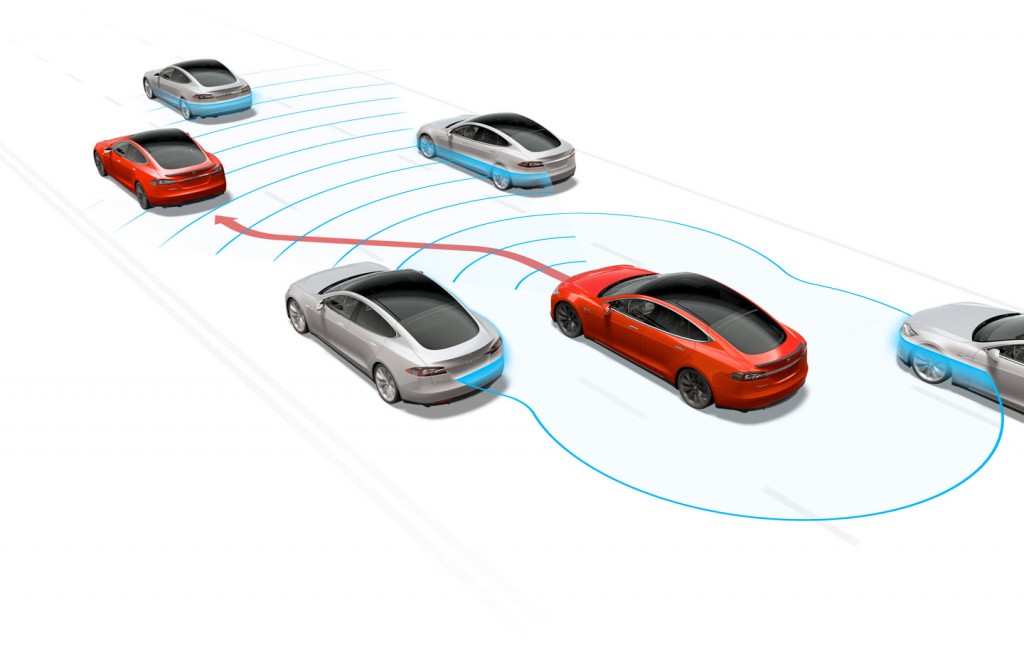Tesla Motors regularly releases new features for its electric cars via over-the-air software updates.
The system allows Tesla to upgrade its cars quickly, without inconveniencing owners, while sidestepping the traditional model-year updates used by other carmakers.
But Tesla owners are likely unaware that the company apparently uses this always-on Internet connection for other purposes.
DON'T MISS: Tesla Autopilot: The 10 Most Important Things You Need To Know (Oct 2015)
Tesla is testing new features for its "Autopilot" autonomous-driving system with secret updates to customer cars, according to the MIT Technology Review.
That disclosure came during a presentation by Sterling Anderson, who runs the Autopilot program, at a conference in San Francisco.
He claimed the software being tested doesn't affect vehicle operations at all—essentially because each Tesla electric car has parallel control systems.

Tesla Autopilot suite of features - with version 7.0 update
One system controls the car itself, while another runs simulations that don't affect any actual vehicle systems.
This allows Tesla to use real-world data from cars on the road to test how new bits of software behave.
Access to customer cars also provides Tesla with a trove of data.
ALSO SEE: Old Vs New: 2016 Tesla Model S 90D Compared To Original Version
Tesla says it receives 1 million miles worth of driving data from owners every 10 hours.
Over the past 18 months, it's downloaded 780 million miles of travel data.
Tesla uses that data as input into new software routines being developed for the Autopilot system.

Tesla Autopilot sensor system
Features that show promise in improving the car's ability to drive itself can secretly be installed in owners' cars, in "inert" mode, to simulate how they would react to real-world driving situations.
The article notes that the network connection can be a powerful research tool, but certain safeguards must remain in place.
Specifically, Tesla must be rigorous about keeping the two systems segregated in order to ensure that the simulation system never interacts with a car's real controls.
MORE: Tesla Adds Safety Provisions To 'Summon' Self-Driving Feature
Both systems must also be shielded from outside interference by hackers, who might try to exploit Tesla's network connection to access vehicle systems.
This has become more of a concern throughout the industry as carmakers continue to add remote access for features like software updates and telematics.
Nonetheless, Tesla's ability to load and test new software, while keeping it in "inert" mode, on actual customers' cars in real-world driving, may be unique in the industry, the article suggests.
_______________________________________________












